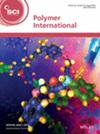下载PDF
{"title":"用于微生物燃料电池系统的tio2掺杂磺化聚醚酮/聚乙烯醇共混膜合成","authors":"Sema Tuğçe Baykara, Gizem Hazan Akçay, Aygün Çalı, İrfan Ar","doi":"10.1002/pi.6786","DOIUrl":null,"url":null,"abstract":"<p>This study explores the development and comprehensive evaluation of titanium dioxide (TiO<sub>2</sub>)-doped, thermally crosslinked sulfonated poly(ether ether ketone) (SPEEK)/poly(vinyl alcohol) (PVA) blend membranes for microbial fuel cell (MFC) applications. The membranes were synthesized with varying TiO<sub>2</sub> concentrations and characterized through analyses of water content, ion exchange capacity, swelling behavior, mechanical strength, electrochemical impedance spectroscopy and Fourier transform infrared spectroscopy. Incorporation of TiO<sub>2</sub> significantly enhanced proton conductivity and reduced water-induced mass loss compared to undoped membranes. Among the various compositions, the membrane containing 5 wt% TiO<sub>2</sub> (SPEEK/PVA-5T) demonstrated the highest proton conductivity of 0.4346 S cm<sup>−1</sup> at 25 °C, indicating superior performance. The membranes were tested in a cylindrical H-type MFC setup. The SPEEK/PVA-5T membrane achieved a maximum voltage output of 560.610 mV and a power density of 62.856 μW m<sup>−2</sup>, in comparison to a commercial Nafion 117 membrane, which delivered 777.740 mV and 120.975 μW m<sup>−2</sup>. These findings underscore the potential of the SPEEK/PVA-5T membrane as an effective and sustainable alternative for MFC applications, offering enhanced ion transport and contributing to the advancement of carbon-neutral energy technologies. This work represents a meaningful step toward the development of high-performance, eco-friendly membrane materials for renewable energy systems. © 2025 The Author(s). <i>Polymer International</i> published by John Wiley & Sons Ltd on behalf of Society of Chemical Industry.</p>","PeriodicalId":20404,"journal":{"name":"Polymer International","volume":"74 9","pages":"848-857"},"PeriodicalIF":3.6000,"publicationDate":"2025-05-30","publicationTypes":"Journal Article","fieldsOfStudy":null,"isOpenAccess":false,"openAccessPdf":"https://scijournals.onlinelibrary.wiley.com/doi/epdf/10.1002/pi.6786","citationCount":"0","resultStr":"{\"title\":\"TiO2-doped sulfonated poly(etheretherketone)/poly(vinyl alcohol) blend membrane synthesis for microbial fuel cell systems\",\"authors\":\"Sema Tuğçe Baykara, Gizem Hazan Akçay, Aygün Çalı, İrfan Ar\",\"doi\":\"10.1002/pi.6786\",\"DOIUrl\":null,\"url\":null,\"abstract\":\"<p>This study explores the development and comprehensive evaluation of titanium dioxide (TiO<sub>2</sub>)-doped, thermally crosslinked sulfonated poly(ether ether ketone) (SPEEK)/poly(vinyl alcohol) (PVA) blend membranes for microbial fuel cell (MFC) applications. The membranes were synthesized with varying TiO<sub>2</sub> concentrations and characterized through analyses of water content, ion exchange capacity, swelling behavior, mechanical strength, electrochemical impedance spectroscopy and Fourier transform infrared spectroscopy. Incorporation of TiO<sub>2</sub> significantly enhanced proton conductivity and reduced water-induced mass loss compared to undoped membranes. Among the various compositions, the membrane containing 5 wt% TiO<sub>2</sub> (SPEEK/PVA-5T) demonstrated the highest proton conductivity of 0.4346 S cm<sup>−1</sup> at 25 °C, indicating superior performance. The membranes were tested in a cylindrical H-type MFC setup. The SPEEK/PVA-5T membrane achieved a maximum voltage output of 560.610 mV and a power density of 62.856 μW m<sup>−2</sup>, in comparison to a commercial Nafion 117 membrane, which delivered 777.740 mV and 120.975 μW m<sup>−2</sup>. These findings underscore the potential of the SPEEK/PVA-5T membrane as an effective and sustainable alternative for MFC applications, offering enhanced ion transport and contributing to the advancement of carbon-neutral energy technologies. This work represents a meaningful step toward the development of high-performance, eco-friendly membrane materials for renewable energy systems. © 2025 The Author(s). <i>Polymer International</i> published by John Wiley & Sons Ltd on behalf of Society of Chemical Industry.</p>\",\"PeriodicalId\":20404,\"journal\":{\"name\":\"Polymer International\",\"volume\":\"74 9\",\"pages\":\"848-857\"},\"PeriodicalIF\":3.6000,\"publicationDate\":\"2025-05-30\",\"publicationTypes\":\"Journal Article\",\"fieldsOfStudy\":null,\"isOpenAccess\":false,\"openAccessPdf\":\"https://scijournals.onlinelibrary.wiley.com/doi/epdf/10.1002/pi.6786\",\"citationCount\":\"0\",\"resultStr\":null,\"platform\":\"Semanticscholar\",\"paperid\":null,\"PeriodicalName\":\"Polymer International\",\"FirstCategoryId\":\"92\",\"ListUrlMain\":\"https://scijournals.onlinelibrary.wiley.com/doi/10.1002/pi.6786\",\"RegionNum\":4,\"RegionCategory\":\"化学\",\"ArticlePicture\":[],\"TitleCN\":null,\"AbstractTextCN\":null,\"PMCID\":null,\"EPubDate\":\"\",\"PubModel\":\"\",\"JCR\":\"Q2\",\"JCRName\":\"POLYMER SCIENCE\",\"Score\":null,\"Total\":0}","platform":"Semanticscholar","paperid":null,"PeriodicalName":"Polymer International","FirstCategoryId":"92","ListUrlMain":"https://scijournals.onlinelibrary.wiley.com/doi/10.1002/pi.6786","RegionNum":4,"RegionCategory":"化学","ArticlePicture":[],"TitleCN":null,"AbstractTextCN":null,"PMCID":null,"EPubDate":"","PubModel":"","JCR":"Q2","JCRName":"POLYMER SCIENCE","Score":null,"Total":0}
引用次数: 0
引用
批量引用




 求助内容:
求助内容: 应助结果提醒方式:
应助结果提醒方式:


